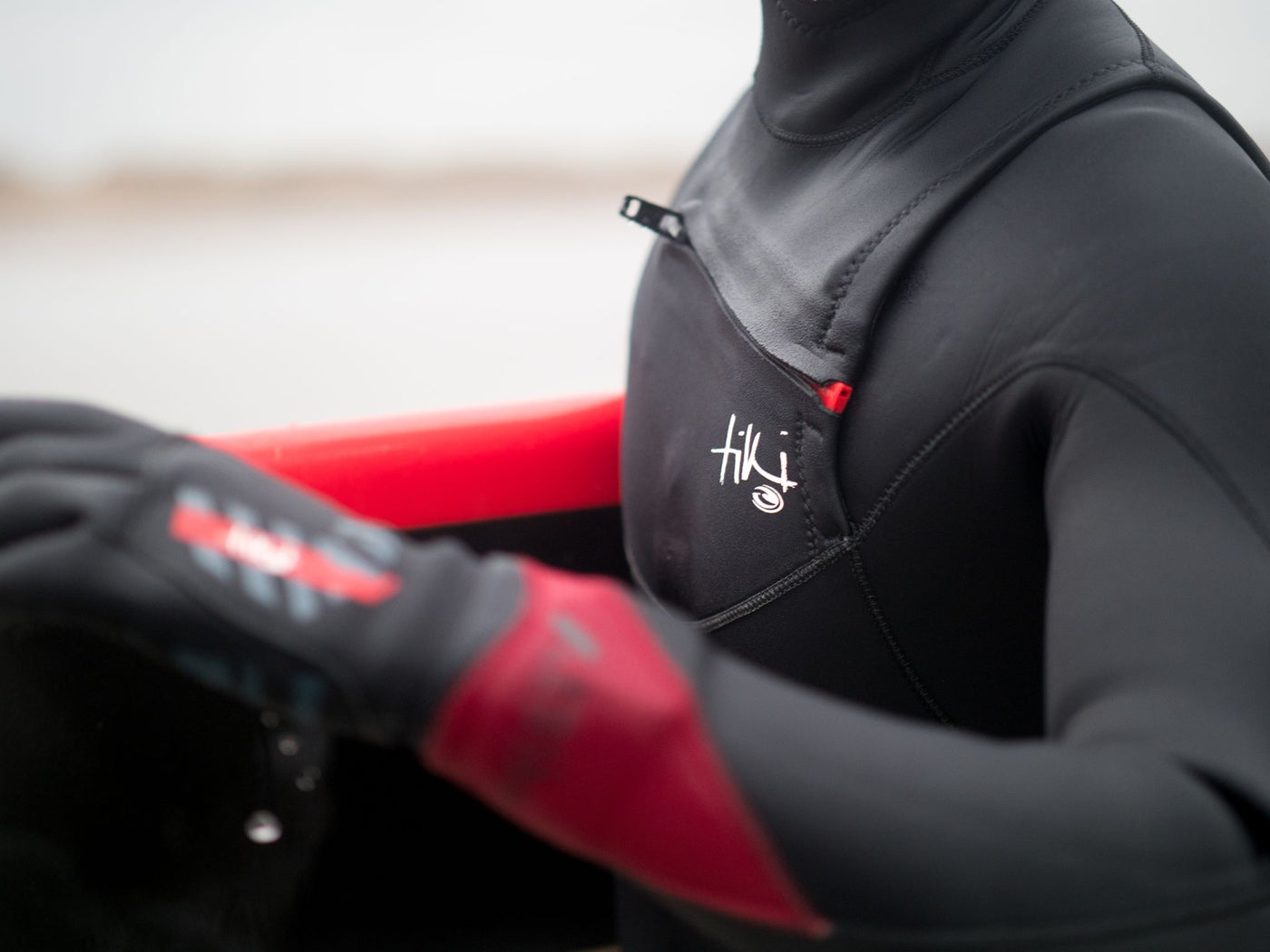Cart
Your cart is empty
Surfing is not just a sport; it's a way of life. The thrill of catching the perfect wave and gliding through the ocean is a feeling like no other. It does not discriminate and captures people of all ages and walks of life.
But to make the most of your surfing experience, a high-quality wetsuit is an absolute necessity to keep you warm and comfortable. Choosing a wetsuit can seem like a minefield with so many different options available; as seasoned experts with over 50 years of experience making wetsuits, our mission is to be your trusted guide through the exciting world of wetsuits.
We are dedicated to equipping you with the knowledge and confidence needed to make informed decisions and conquer the waves with the prowess of a seasoned pro!

A wetsuit is a specialist garment worn in the water to help keep you warm. As one of the most vital pieces of gear a wetsuit is often crafted from stretchy and insulating neoprene material. The neoprene's structure effectively traps air, creating an insulated barrier. While the thermal linings within the wetsuit further amplify the insulation by creating additional layers of trapped air close to your skin.
Equipped with a decent wetsuit, you can fully immerse yourself in water activities, enjoying the thrill of the experience!
Achieving the perfect wetsuit size is essential for a comfortable and enjoyable water sports experience. Nobody wants an ill-fitting wetsuit with a baggy crotch or ankle basher legs! To ensure the ideal fit, follow these steps and find your perfect wetsuit:
Remember, a well-fitted wetsuit will enhance your performance and keep you warm during your water adventures. If you're placing an online order, feel free to get in touch with our knowledgeable wetsuit team. They're here to assist you with fitting and sizing recommendations, ensuring you get the perfect fit for your new gear.
The thickness of the wetsuit you need depends on the temperature of the water you will be surfing in, your tolerance levels and the wind on the day... don’t be fooled by a sunny but windy autumn day! So, what is with the wetsuit numbering system, sounds a bit complicated right? Wrong, once explained it’ll make far more sense:
Simple right? The diagram above will help you choose the right thickness for the conditions you’ll be surfing in.
Always consider your personal tolerance to cold and the duration of your water activities when choosing the appropriate wetsuit thickness, having to cut your session short when the conditions are awesome is a bit of a bummer!
Storing your wetsuit properly is essential for maintaining its longevity, preventing the fabric breaking down, ensuring the fit remains the same and keeps it functioning optimally. Here are some tips to help you store your wetsuit correctly:
Avoid Folding when drying or storing your wetsuit as it can create creases that may become permanent over time. Instead, gently drape the wetsuit over a hanger or drying rack to maintain its shape. If you prefer, use a wide hanger with padded shoulders or a specialised wetsuit hanger to prevent indentations and excessive stretching overtime.
Our top pick for a wetsuit hanger is the C-Monsta Wetsuit Hanger CV2
Store it in a cool, dry place out of direct sunlight. We know how tiring it is after a grueling day being battered by the waves... but never leave your wetsuit in a bag or container as this could lead to potential damage. If your wetsuit has a zip, leave it open whilst drying to help ventilate your suit.
Yes, there are wetsuits designed specifically for men, women, and children. The differences lie in the fit, shape, and design to accommodate the unique body proportions as we’re all different shapes and sizes after all. Some brands may offer unisex wetsuits that can be worn by anyone, while others have specific collections for each group.
Apart from the fit and design, wetsuits for men, women, and kids may also differ in style and colour preferences too. When choosing a wetsuit, it's essential to consider not only the size but also the body shape to ensure a comfortable and effective fit.
Wetsuit lifespan varies based on usage, care, and the quality of the wetsuit. On average, a well-maintained wetsuit can last anywhere from 2 to 5 years of regular use. However, factors like exposure to sunlight, frequent use in harsh conditions, or improper storage can affect its durability. If you notice signs of wear such as thinning neoprene, loose seams, or a decrease in thermal insulation, it might be time to consider replacing your wetsuit. Upgrading to a new one ensures you continue to enjoy optimal comfort and protection during your water adventures. Remember, investing in a high-quality wetsuit and practicing proper care will extend its life, keeping you confidently riding the waves for years to come!

Sadly, as with all things, nothing lasts forever. While diligently following these tips will undoubtedly extend the life of your cherished wetsuit, there will eventually come a time when it has weathered one too many swells. When that bittersweet day arrives, rest assured that we'll be here to wipe away your tears and assist you in finding the perfect replacement. We can save your wetsuit from landfill by recycling your old suit for you, with our partner Circular Flow.
Why not take advantage of our special offer: trade in your old suit and receive a 10% discount on any Tiki Wetsuit. Upgrade your gear while saving... it's a win-win!
If chosen correctly using our Wetsuit Temperature Guide above, you shouldn’t need any extra layers underneath your wetsuit for added warmth. In fact, adding extra layers underneath can do the opposite and hinder the wetsuit's insulating performance. That doesn’t mean you need to bare all and opt for your birthday suit, but some board shorts or swimsuit will suffice.
Should you choose to wear a rash vest for extra comfort check out our favourites here.

Surfing holds an inexplicable allure that draws surfers back to the sea time and time again. Offering lessons in patience, resilience, and respect for the ocean's power.
Whether you're a beginner or a seasoned pro, surfing provides an escape from the mundane whilst immersing yourself in the beauty of the sea.
Our Wetsuit Team provides free fitting advice, helping reduce returns and minimise our environmental impact as we aim to protect our planet.
If you’re unsure on sizing, brand, thickness etc… please consider contacting one of our pro wetsuit team, with over 1000+ wetsuit fittings under their belt, they'll ensure you get it right the first time, eliminating the need for returns.
You can reach our team via the live chat option on our website or emailing our customer service team at info@tikisurf.co.uk